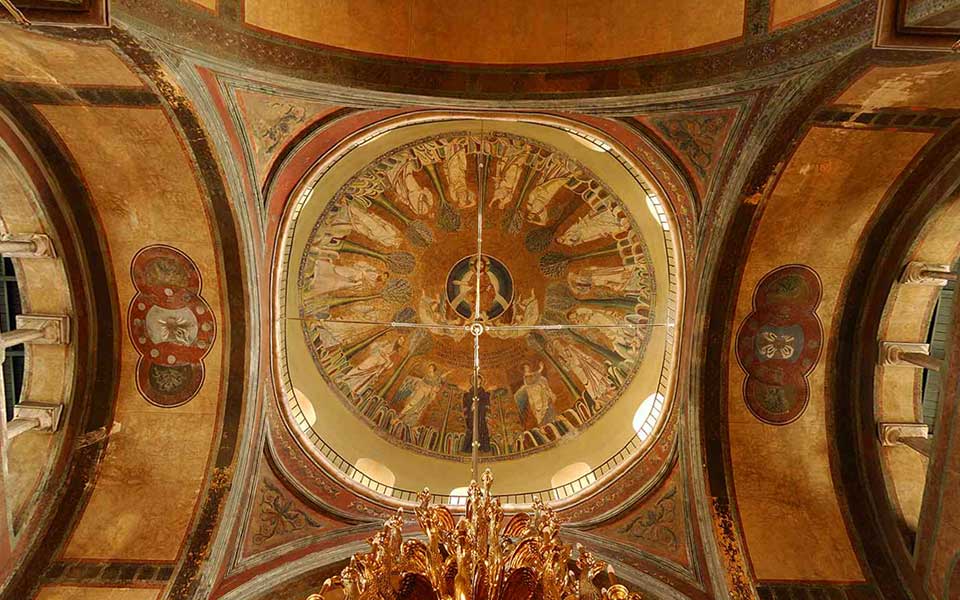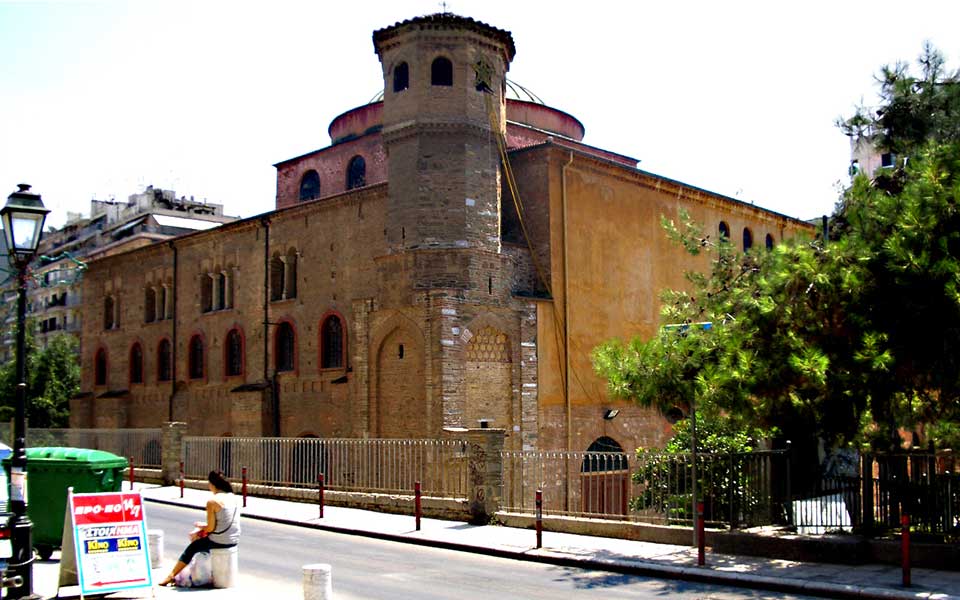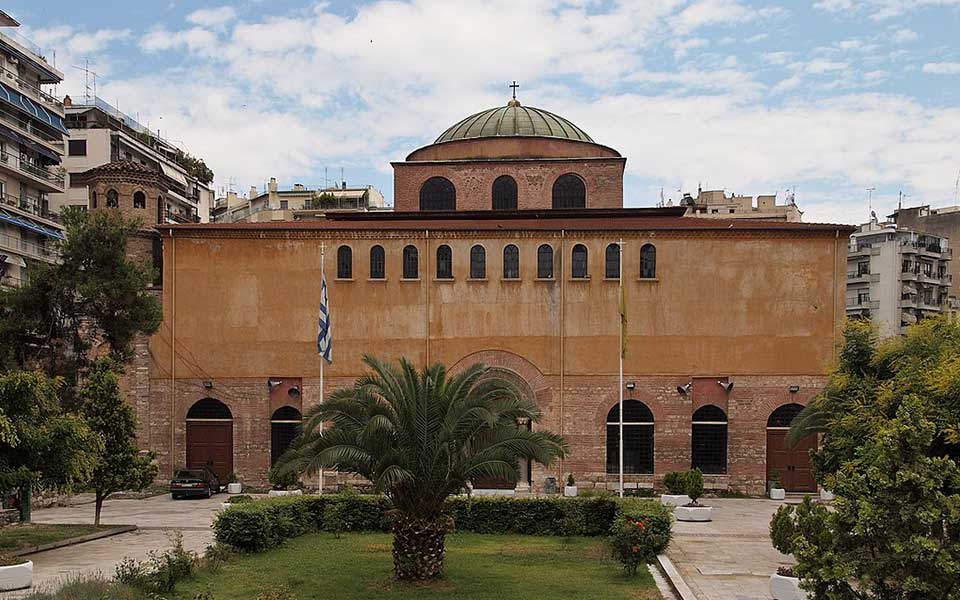Aghia Sophia (“Holy Wisdom”) is one of Thessaloniki’s oldest ecclesiastical monuments. Built in the late 7th century, it represents a typical example of Middle Byzantine church architecture, based around the characteristic ground plan of a domed Greek cross.
The church is one of fifteen Paleochristian and Byzantine monuments in the northern Greek city listed as a UNESCO World Heritage Site.
Ongoing excavations inside the church and its adjacent courtyard, carried out by members of the Ephorate of Antiquities of the City of Thessaloniki (ΕΦΑΠΟΘ), have unearthed dozens of clay storage vessels from the Middle Byzantine period (843-1204), stacked in the gaps between the domes on the ground floor and the side walls of the main building. Head of ΕΦΑΠΟΘ, Elisavet Tsigarida, believes the vases served a dual purpose: “One the one hand, it lightened the construction of the massive cubic building, on the other, it improved the acoustics.”

© Evilemperorzorg
Other finds are shining a light on some of the hitherto unknown aspects of the church’s ecclesiastical and administrative life, and its place within the Byzantine empire. Aside from a number of coins, archaeologists have recovered seventeen lead bulls (seals) dating to the 10th and 11th centuries, found in the western and southern pavilions of the church. Lead (and silver) bulls were used by Byzantine officials to seal important documents.
Lead bulls are essential to our understanding of the inner workings of the heavily bureaucratic Byzantine state, expanding our knowledge of historical figures, titles, offices and institutions, and how they interacted. At Aghia Sophia, the church not only served as a place of worship but as a center of regional and ecclesiastical administration, housing a secretariat that operated within the wider Byzantine “matrix.”
A study of the seals has revealed that documents were stamped by, among others, Archbishop Nikitas of Thessaloniki in the 10th century, Constantine, viceroy, patriarch and prefect of the city, and Leo, the general of the city.

© Ωριγένης
Renovation Works
ΕΦΑΠΟΘ has also launched an ambitious renovation and landscaping project at the site, with funding from the EU’s National Strategic Reference Framework (NSRF). The works, focused on the vestibules and on the ruins of an earlier basilica, will turn the palimpsest courtyard into an archaeological site, open to the public.
The present church, erected in the 7th century, was built on the ruins of a much larger five-aisled basilica destroyed by the great earthquake of 620. The large cruciform church is adorned with beautiful mosaics and frescoes dating from the 9th to 11th centuries, including the spectacular Ascension of Christ in the large dome.
The renovation plans envisage a new entrance to the site, from the tower on the side of Karamopoulou Street, which will lead visitors directly to the vestibules. Visitors will then be able to look down upon the ground floor of the earlier basilica.
Christian worship at Aghia Sophia continued uninterrupted for 800 years until, following the capture of Thessaloniki by the Ottoman sultan Murad II in 1430, it was converted into a mosque. It was re-converted to a church upon the city’s liberation in 1912.
The restoration project was started last year. The works are in progress and it is estimated that the site will be fully accessible to the public in two years.
With information in Greek from kathimerini.gr.












